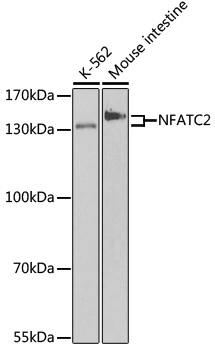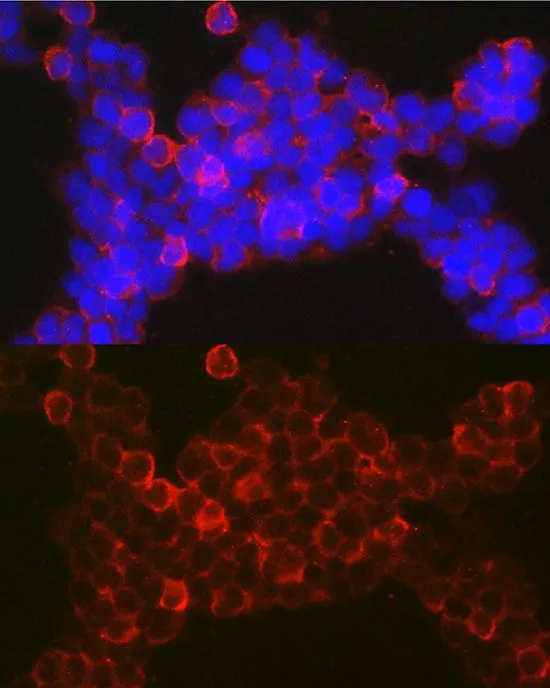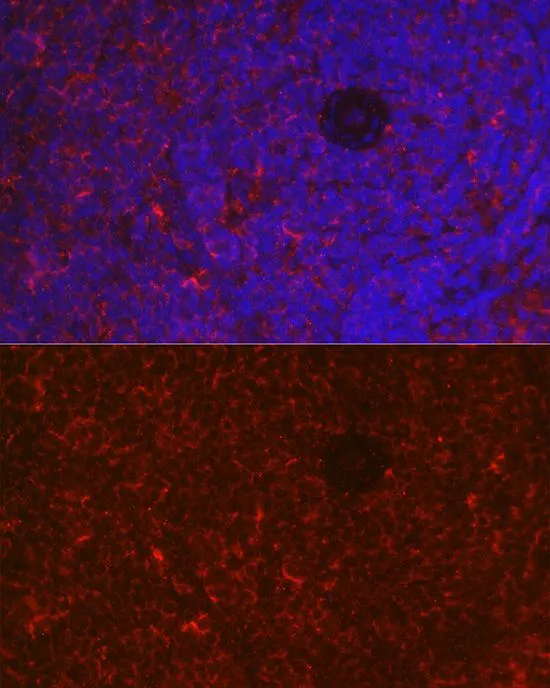
WB analysis of various sample lysates using GTX33354 NFAT1 antibody. The signal was developed with ECL plus-Enhanced. Dilution : 1:500 Loading : 25microg per lane
NFAT1 antibody
GTX33354
ApplicationsImmunoFluorescence, Western Blot, ImmunoCytoChemistry, ImmunoHistoChemistry, ImmunoHistoChemistry Paraffin
Product group Antibodies
TargetNFATC2
Overview
- SupplierGeneTex
- Product NameNFAT1 antibody
- Delivery Days Customer9
- Application Supplier NoteWB: 1:500 - 1:1000. ICC/IF: 1:50 - 1:200. *Optimal dilutions/concentrations should be determined by the researcher.Not tested in other applications.
- ApplicationsImmunoFluorescence, Western Blot, ImmunoCytoChemistry, ImmunoHistoChemistry, ImmunoHistoChemistry Paraffin
- CertificationResearch Use Only
- ClonalityPolyclonal
- ConjugateUnconjugated
- Gene ID4773
- Target nameNFATC2
- Target descriptionnuclear factor of activated T cells 2
- Target synonymsJCOSL, NFAT1, NFATP, nuclear factor of activated T-cells, cytoplasmic 2, NF-ATc2, NFAT pre-existing subunit, NFAT transcription complex, preexisting component, T cell transcription factor NFAT1, nuclear factor of activated T-cells, cytoplasmic, calcineurin-dependent 2, nuclear factor of activated T-cells, preexisting component, preexisting nuclear factor of activated T-cells 2
- HostRabbit
- IsotypeIgG
- Protein IDQ13469
- Protein NameNuclear factor of activated T-cells, cytoplasmic 2
- Scientific DescriptionThis gene is a member of the nuclear factor of activated T cells (NFAT) family. The product of this gene is a DNA-binding protein with a REL-homology region (RHR) and an NFAT-homology region (NHR). This protein is present in the cytosol and only translocates to the nucleus upon T cell receptor (TCR) stimulation, where it becomes a member of the nuclear factors of activated T cells transcription complex. This complex plays a central role in inducing gene transcription during the immune response. Alternate transcriptional splice variants encoding different isoforms have been characterized. [provided by RefSeq, Apr 2012]
- Storage Instruction-20°C or -80°C,2°C to 8°C
- UNSPSC12352203







